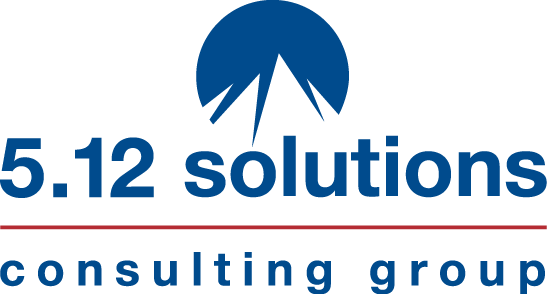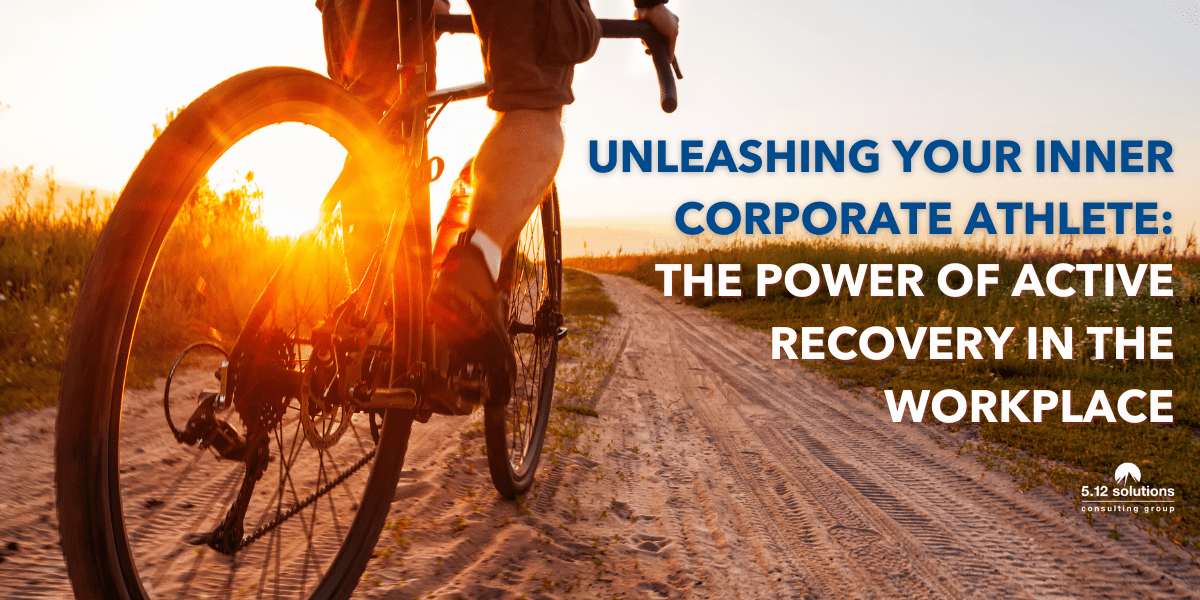One of my favorite pastimes right now is gravel bike racing. I typically put three races per year on my calendar, and I truly love the entire journey – from the dedicated training for a specific goal, to the buzzing pre-race energy, the challenge of the race itself, and the camaraderie of the post-race social scene. As I’ve gotten more focused on my racing performance on the course, I’ve really tuned into the incredible power of active recovery. It’s become clear to me that just as effective recovery unlocks my full potential on the bike, there are a number of powerful lessons we can apply as “corporate athletes” in the demanding world of work.
In environments where performance, adaptability, and collaboration are critical, leaders are constantly pushing their limits, refining strategies, and executing with precision. The demands are immense, leading to high cognitive load and often an “out-hustle” culture that can overlook the critical need for rest and recovery. But what if the key to sustained peak performance, much like in elite sports, lies not just in how hard you work, but in how effectively you recover?
Drawing parallels from the world of gravel bike racing and endurance athletics, we can unlock powerful strategies for “active recovery” that translate directly to the demands of your daily work life. Just as athletes manage the stress placed on their bodies to build fitness, you too can adapt and increase your resilience and performance by strategically integrating recovery into your professional routine.
Why Active Recovery Matters at Work
In gravel biking, constant high-intensity effort without recovery leads to a catabolic state – muscles begin to break down rather than rebuild. Eventually, the rider hits a wall. The smarter strategy? Active recovery. When cyclists continue pedaling lightly during recovery intervals, they keep blood flowing, helping to clear metabolic byproducts and deliver fuel and oxygen to tired muscles.
The same holds true in the workplace. When cognitive demand is relentless and recovery is ignored, the brain begins to suffer. Mental clarity fades, and energy crashes become the norm.
Active recovery in your professional life can help prevent:
- Mental clutter that blocks clear thinking and effective decision-making
- Brain fog that slows problem-solving and creativity
- Emotional depletion that strains communication and teamwork
- Burnout that drains motivation and lowers performance
Like the best athletes, high-performing professionals know recovery isn’t a sign of weakness – it’s part of the system that sustains results.
Active Recovery During Your Workday

Think of your workday as a series of intense “intervals” – back-to-back meetings, complex problem-solving sessions, or tight deadlines. Instead of coming to a complete stop or switching immediately to another high-demand task, incorporate mini-recovery periods:
- Keep the “Blood Flowing”: During short breaks between tasks or meetings, don’t just sit still. Get up and move. Even two or three minutes of light movement, like walking around the office, doing some stretches, or simply standing at a raised desk, can significantly change your physiological state and boost mental clarity.
- Focus on Your Breath: When emotions run high or you feel overwhelmed, take a deliberate pause. Slow, deep breathing, inhaling through the nose and exhaling slowly through the mouth, can physiologically calm your body, tell stress hormones to “chill,” and promote a more relaxed state. This conscious breathing is a simple yet powerful way to reduce anxiety and calm your mind throughout the day.
Active Recovery Between Work Sessions and Days
Just as cyclists engage in “easy spinning” on days between hard training sessions, leaders need to schedule deliberate periods of lower intensity to allow for mental and emotional repair. Remember, “easy” means very easy – avoiding activities that add more stress or fatigue to your body.
- Schedule “Easy” Time: Block out time in your calendar for focused work on your priorities, but also ensure you have blocks of unscheduled time to catch your breath and react to urgent situations. This also applies to intentionally stepping away from work in the evenings and on weekends.
- Engage in “Low-Intensity” Tasks: Instead of always tackling critical, demanding tasks (which are often “other people’s priorities”), reserve some time for less cognitively demanding work that allows for mental processing and de-stressing.
- “Change Your Scenery”: If you spend most of your time indoors, make an effort to get outside. Even a simple walk can boost your mood and help you decompress. Find something you love to do, whether it’s cycling, climbing, playing tennis, or spending time with family, and schedule it. This enjoyment time is critical for turning off your analytical mind and recharging your energy.
The Unrivaled Power of Sleep and Strategic Naps

Sleep is arguably the most critical component of daily recovery for both athletes and corporate leaders. The “I’ll sleep when I’m dead” mentality, which admittedly I used to subscribe to, is an outdated way of thinking when it comes to performance.
Sleep is where your brain literally “rewires,” cleans out “gunk,” and organizes itself, profoundly impacting your cognitive function, energy, and decision-making.
- Prioritize Quality Sleep: Aim for 7-9 hours of quality sleep per night. To optimize this, establish a consistent bedtime and wake-time schedule, even on weekends. Create a calming bedtime routine, such as reading a paper book or meditating, and avoid electronic devices for at least two hours before bed, as their blue light disrupts melatonin production.
- Embrace Strategic Naps: Even short naps (10-20 minutes) can increase mental acuity and stimulate recovery by balancing hormones like human growth hormone and cortisol. They provide an opportunity for quick mental resets throughout the day.
A Holistic View of Executive Wellness
Remember, your overall well-being is influenced by numerous interconnected factors beyond just work. Stress can come from family, diet, environment, and more.
A holistic approach to executive wellness encompasses:
- Mental Fitness: Keeping your brain and emotional health in top shape through practices like mindfulness, meditation, visualization, and gratitude.
- Nutrition: Fueling your body with whole, nutritious foods to support optimal performance, much like an athlete’s precise diet for muscle recovery and energy.
- Social Connections: Nurturing strong social relationships outside of work is a significant predictor of physical and mental health.
- Purpose and Meaning: Connecting your daily efforts to a “big why” or personal motto can provide incredible drive and resilience, especially during challenging times.
As corporate athletes, integrating active recovery into your daily life is not a luxury, but a necessity for sustained high performance, preventing burnout, and achieving your full potential in all areas of life. By intentionally building these habits, you can lead with greater energy, focus, and resilience, ready to tackle any “wicked problem” that comes your way. Just as the journey of training, racing, and connecting post-race fuels my performance and enjoyment on the gravel bike, embracing a similar holistic approach to recovery will enable you to not just survive, but truly thrive as a leader, finding deeper meaning and sustained fulfillment in your personal and professional life.
Ready to take your leadership performance to the next level?
Strong leaders know that consistent performance isn’t just about effort – it’s about how you recharge, reflect, and grow over time.
The Coaching Toolkit offers structured reflection tools and practical coaching frameworks to support your development, both during and after those high-demand intervals. Use it to bring more intention to your recovery, deepen your leadership impact, and create space for meaningful progress.
Get the Coaching Toolkit today

